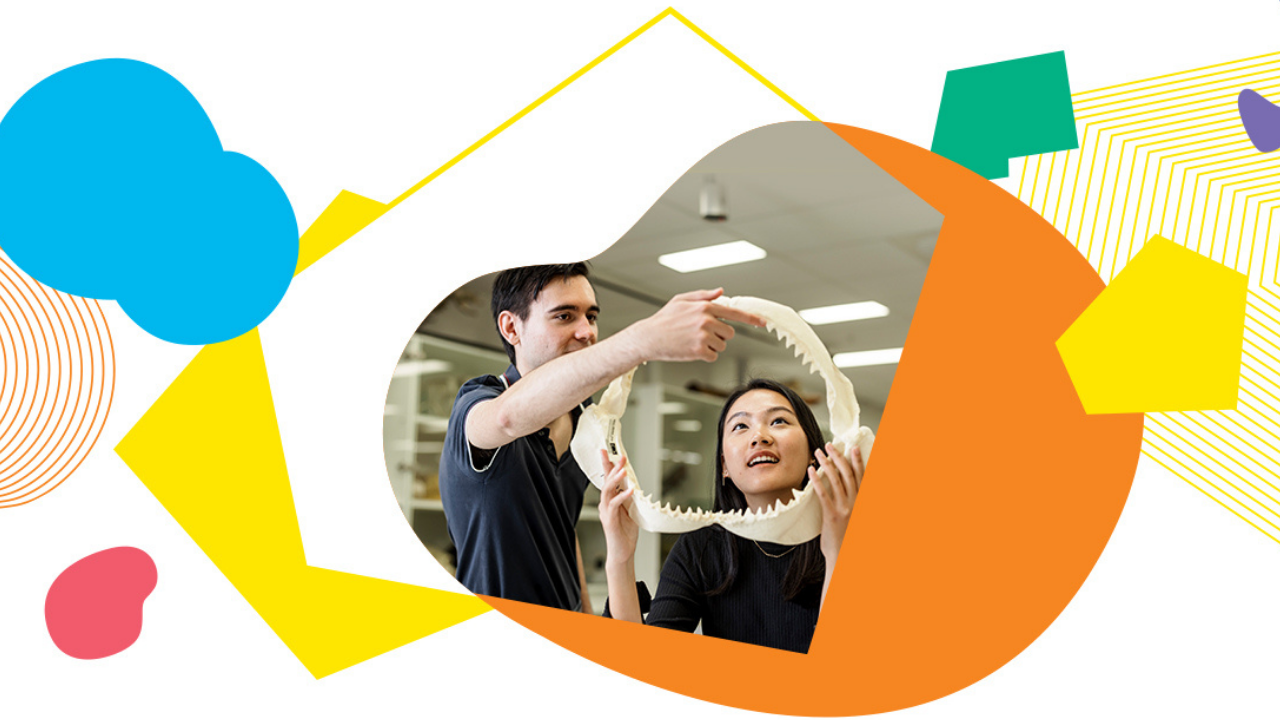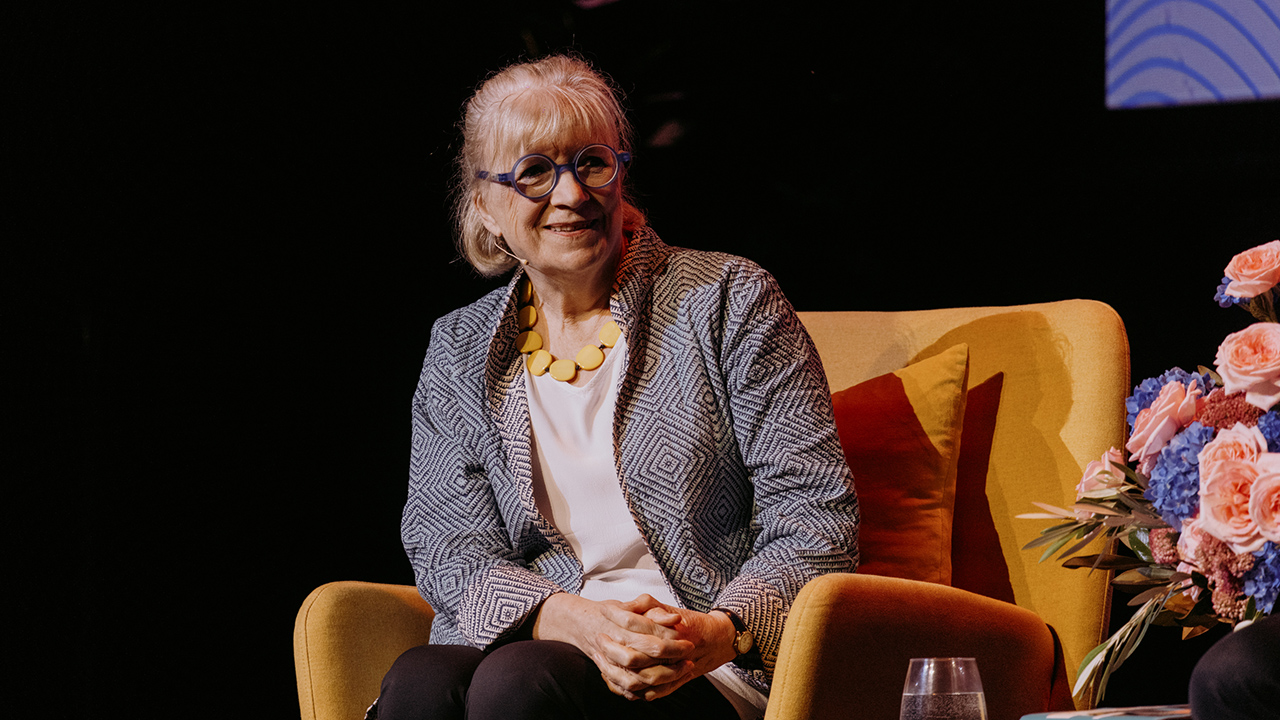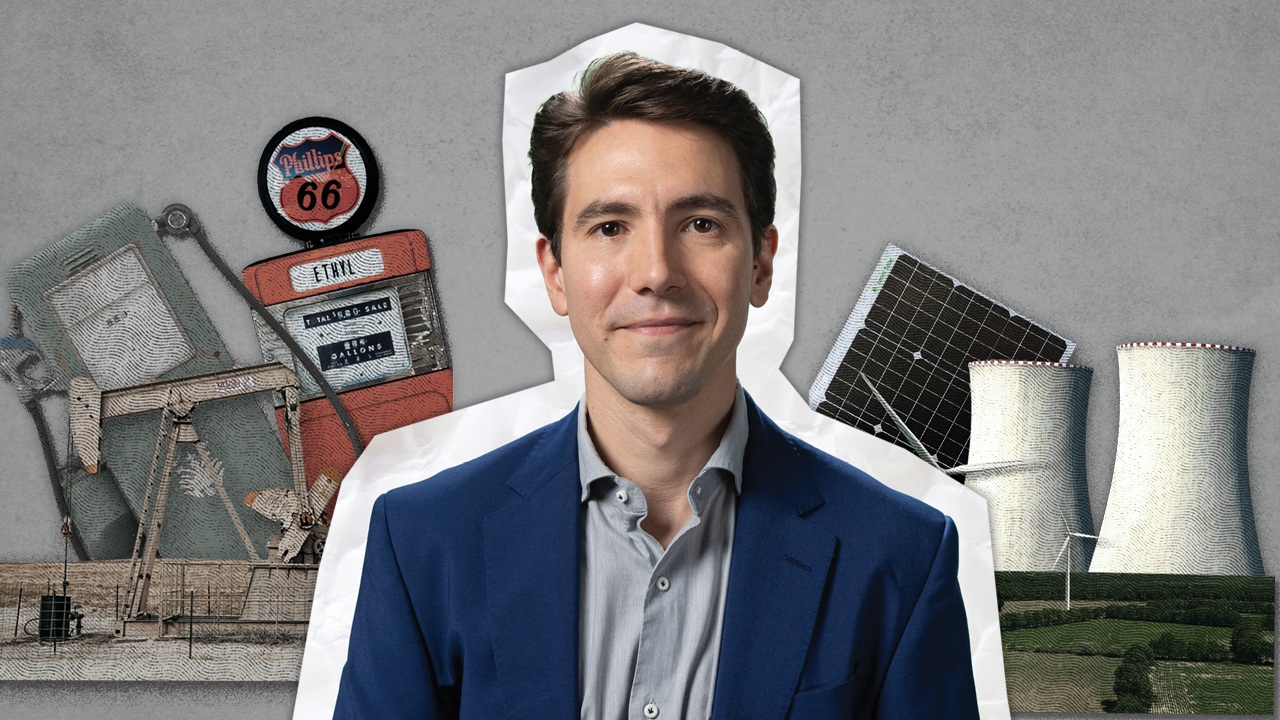Space Weather and the Path to Mars

I think it’s very important instead to proceed to a human mission to the Moon. That is a lot more feasible. That will be very useful to solve the problems to be encountered in a longer term mission towards Mars.
Our space assets and our electricity grid are increasingly important for our modern life. Try to imagine life without them, so really, space weather is really important to understand.
2021 EINSTEIN LECTURE
Bad weather in space means much more than just a bit of wind. Astronauts go up against solar flares, gamma rays and high energy nuclear particles in their mission to explore the red planet. But if we don’t figure out how to protect ourselves against these extreme dangers, Mars will remain a no-go zone forever.
In this talk, Sarah Brough, Iver Cairns, and Susanna Guatelli discuss the finer aspects of space weather and radiation protection.
Presented by the UNSW Centre for Ideas and the Australian Institute of Physics, and supported by Inspiring Australia as a part of National Science Week.

Transcript
Ann Mossop: Welcome to the UNSW Centre for Ideas podcast, a place to hear ideas from the world's leading thinkers and UNSW Sydney's brightest minds. I'm Ann Mossop, Director of the UNSW Centre for Ideas. The conversation you're about to hear, Space Weather and the Path to Mars, the 2021 Einstein Lecture, features Sarah Brough, Iver Cairns, and Susanna Guatelli, and was recorded live. I hope you enjoy the conversation.
Sarah Brough: It's lovely to be here, however remote we all are. And I'd like to extend a warm welcome to our audience tuning in tonight, including UNSW staff, students and alumni along with a broad and diverse science community. I'm Sarah Brough, and I'm a professor in UNSW Sydney’s School of Physics. My research focuses on galaxy evolution. My research community has a few potential CubeSat ideas for Galaxy Evolution research. But as well, I'm someone with a lifelong fascination about space and I'm really excited to hear what tonight's speakers have to teach us about their research. Tonight we are joined by Susanna Guatelli, Associate Professor at the University of Wollongong and an international expert of Monte Carlo Radiation Transport Simulation Codes for Radiation Physics, as well as Iver Cairns professor of Space Physics at the University of Sydney, who is a leader in Australia's space science community, and Director of Cuava, the training centre for CubeSats UAVs and their applications. Iver is a co-investigator on NASA's STEREO mission and since June 2019, on NASA's two new SMEX missions, PUNCH and TRACERS. He led the Inspire-2 CubeSat project which launched in May 2017. And re-entered, still working in November 2018. Inspire-2 and UNSW-ECO were the first Australian built and owned CubeSats to work in space, and only the fourth and fifth such satellites. Associate Professor Susanna Guatelli is an international expert of Monte Carlo Radiation Transport Simulation Codes for Radiation Physics. These include medical applications, as well as radiation protection in Earth Labs, aviation and space. Her PhD focused on radiation protection of astronauts in missions to Mars, within the Aurora project of the European Space Agency, based at CERN in Switzerland, she contributed to project spanning radiation monitoring for the Large Hadron Collider, to the effect of radiation at DNA level in astronauts. Associate Professor Guatelli, is passionate about science communication, and inspiring young people to study physics. Now we're going to dive into a conversation, and we've got some great questions here from our audience, which I will dive into. I wanted to start with, and this is a funny one, because I'm often asked this myself, what do you think about the science shown in The Martian? Either, you know, botany on Mars, the water oxygen reclamation methods, what do you think?
Susanna Guatelli: Well, The Martian is in this lab, which is on the surface of Mars. Well, I think that for a long term mission that is not a great solution, because the astronauts would really be exposed to galactic cosmic rays that actually will produce chronic effects and solar particle events, it could also severely affect the health of the astronaut. The idea, also for Mars to build the shelters, which are in lava tubes. And secondly, I'm not sure if it's a good idea to cultivate the potatoes in the Martian soil, I mean, it's very rusty. I'm not sure, maybe it's a little bit toxic.
Sarah Brough: A very high iron rich diet.
Susanna Guatelli: Yes. Yes. Yes, a four day diet. I know that there is a researcher that studies into sources of proteins and the one idea is to use it to have a diet that include the insects that may help the astronauts in long term missions.
Sarah Brough: I was going to ask Iver, so we've got a question from Elon Justo. What roles can Cube Satellites play in manned space exploration?
Iver Cairns: Wow, that's a very open ended question. So obviously, CubeSats and satellites in general are very good for things where you want something robotic. So that could be because you don't want to spare the resources to keep the humans alive. And it could be because you're interested in the fundamental plasma physics, or some other aspect. So usually, if you're going to combine CubeSats with a human mission, you're going to want the CubeSat to do something that humans can't. One way to look at that is, perhaps you want more spatial information, as in the humans, presumably in a spacecraft, and, you know, that's only one location that you're sampling the galactic cosmic rays, or the, you know, the thermal plasma, or the magnetic fields. So if you want to get more of a 3D picture of what's going on, you know, the energy flows, the motion of energetic particles, or plasma from one place to another, you might want to have your human vehicle in the middle and an array of CubeSats around it, so as to be able to focus, or be able to view it in 3D. But in general, probably, you're going to want to focus on things that the humans aren't going to want to do, whether that's, you know, putting antennas, for instance, on the surface of the moon, and leaving them there. And then looking at the radio signals coming from the Sun or the galaxy as a whole. That will be one thing you could do. But you don't have to do it on the surface of the moon, you can do it in space as well. So, I think you can do many different things with CubeSats in conjunction with human missions. You know, and there, I was mentioning the scientific aspect, but what about other things? Like. creating a GPS system around the moon, for instance? That's a very natural use for CubeSats. Same sort of thing for radio communications, as you know, our Chinese colleagues have a satellite relay that’s bringing their signals from the backside of the Moon to the Earth. And they’re using, ok, it's a little bit bigger than most people's CubeSats, but it's a satellite. So communications, GPS, I think there are many different aspects.
Sarah Brough: That's a really great perspective on whether it would be really useful. Lincoln Pangphillio asks, the now defunct Mars One plans to create a layer of protection by insulating a spacecraft with water, which can also be used for drinking, is that a viable possibility?
Susanna Guatelli: Yes. So the fact is that different materials, they are under study. There is polyethylene as I mentioned before. Yes, I saw designs that have the walls that are filled with the liquid water, there is a lot of study on the new materials actually. So hydrogen rich materials that have boron inside, because the boron absorbs better neutrons. So there is a very active research field in this domain.
Sarah Brough: Yeah, is weight an element of that because when I think about water, it's such a heavy heavy element to be carrying into space.
Susanna Guatelli: This is a very important point, we have to always pay attention, to listen to the weight or their material that we send into space. Because it's associated with the cost. There's so there are actual… that's why we run, we do simulation studies, is also to optimise the shielding thickness. Because, you know, for galactic cosmic rays for example, which are a lot more energetic than solar particle events, even if I put the 75… if I put a one metre thick, polyethylene or water equivalent wall, well the data will know will just stop a couple of percent of galactic cosmic rays. So actually, we increase a lot of the weights or the material that we have to send to space, but at the end, we don't get a big gain in terms of radiation protection. So yes, so absolutely there is a compromise. There must be a compromise between weight and efficiency in protecting the astronauts from the radiation.
Sarah Brough: And since SpaceX’s starship is intended to make its first crewed flight to Mars and around 2026, are we on track? I was going to ask, are we on track to mitigate radiation using those, you know, the current or, kind of, those near future technologies? Or are we still quite a long way away?
Susanna Guatelli: This is, this is a very big question. My personal opinion is that to have a mission to Mars in a few years, in three, four or five years is a little bit premature. But sure, that the SpaceX, they know their stuff, they are, they are aware of what the risks the astronauts may have in a long term mission. So I don't know, which is the business case or their plan. But I find it a little bit difficult to send astronauts to Mars in a few years time.
Iver Cairns: And that's certainly the opinion of various of my colleagues in the United States. That it's very premature.
Susanna Guatelli: And that's why, thank you Iver, that's why I think it's very important to proceed to a human mission to the moon. That is, instead it is a lot more feasible, and the human mission to the moon, to create a lunar base of astronauts, a permanent lunar base of astronauts, which is also one of the goals of a space researcher, that will be very useful to solve the problems, that then will be encountered in longer term missions towards Mars.
Sarah Brough: Yeah, I think that's a really important point. Iver, I think this question will be a good one for you. Can the usage of cosmic rays as propulsion bear any fruit compared to conventional propulsion techniques?
Iver Cairns: Right, so in some sense, that's just a variant of a standard rocket motor. As we're all aware, a rocket motor, you're going to have some energy deposition, and some fast particles move out the back, in one direction. And by conservation of momentum, your spacecraft goes the other direction. And I think what your question is wondering about is, well, can we just have cosmic rays, or cosmic ray like particles, as the reaction medium that comes out the back? And so the answer is, yes, in principle, but, you have to accelerate the particles up to cosmic ray energies and direct them in a suitable direction. And that's really hard. I mean, in space, cosmic rays are believed most, well, there are various theories for where cosmic rays come from, but one of them is that they come from supernova shockwaves. So rather like the coronal mass ejections, which have their shockwaves in front of them, you can have a supernova shockwave as well. And the particles basically get bounced back and forth across the shock wave. In so called, diffuse of shock acceleration. But the point is, you need to have large distances, you know, you need to be able to go back and forth across a shock wave, which might have, at least in nature, you're looking at distances, which are hundreds of kilometres, if not, you know, millions of kilometres back and forth as they get scattered. And we'd be having to do that same sort of thing in a human spacecraft. So I think, I think really, unless we came up with a very clever way to produce energetic particles going, you know, at the speed of light, which is the cosmic rays. I don't think it's very practical.
Sarah Brough: I'm also curious. So Mahek Preet Kaur asks, how do you think Australia will pave our way into space exploration?
Iver Cairns: Well space exploration doesn't actually have to be very expensive. The Inspire-2 CubeSat, for instance, cost less than 200,000 Australian dollars in money that we actually had to pay. Yes, if you include the cost of salaries and so on, it's a couple of million dollars. The CubeSat, Cuava-1, which should get launched in roughly 20 days, the cost for the components and the launch and so on is closer to a million dollars. But a million dollars is not a lot of money. Our current space agency gets, well, less than $100 million a year, it's closer to about 30 million or so. And yet $30 million is trivial compared with the budget of Australia as a whole. Base exploration doesn't have to be expensive. Certainly not if you're doing it using robotic means, if you're going to involve humans, and you're going to go alone, then the price becomes large. No question. But if you share, like, you know, if we shared with, European Union or we stayed with the Americans, or we shared with others, China, for instance, or Russia, the costs can come way down. Because we can basically use their infrastructure and do things that add value.
Sarah Brough: It is a really positive ecosystem, kind of, forming right now. It's a really exciting time for space in Australia. Now, I've just got one final quick question, and then we'll, kind of, wrap up. And that question was just, who can, should, and will claim Mars, or part of Mars, as theirs, in your opinions?
Iver Cairns: Based on the United Nations CoPUOS treaty, it is not possible for any signator of that to claim possession of an object in space. So, it would not be possible for police a signator, to claim Mars as theirs, they could claim a bit of Mars, in the sense that they would be able to go there, live there, develop there whatever facility that they're wanting to do there, mine it, live there, etc, that would be perfectly fine. But they wouldn't, according to the treaty, be able to claim it. And that's true for the United States, which is a signator, it's true for Australia, it's true for most of the big countries. And personally, I think that's a much more sensible way to go, rather than, you know, allowing the equivalent of an exploration of the Earth, where people who would arrive there would, you know, plant their flag and say, this is mine, I think we should go for the global commons approach, and the United Nations approach and not own things like Mars.
Sarah Brough: Yeah. And I'm very hopeful that we do manage to achieve that going forwards. Suzanna, do you have quick…
Susanna Guatelli: Yeah. I mean, I would like that it will really be like that. Because I don't know maybe, who knows if anyone one day will change these agreements? I think it's a very important question. I hope that the states and the nations will respect these agreements and that this agreement will not be changed.
Sarah Brough: I think we'll leave it on that positive, hopeful note. And I'd like to say thank you very much to our audience for tuning in to Space Weather and the Path to Mars. I'd like to thank our speakers Susanna and Iver for their time tonight. And our audience for joining us. To hear more events including UNSW’s large National Science Week program, please subscribe to the UNSW Centre for Ideas newsletter. And that is us done for today. Thank you.
Iver Cairns: Thank you.
Susanna Guatelli: Thank you very much.
Ann Mossop: Thanks for listening, Space Weather and the Path to Mars was presented by the UNSW Centre for Ideas, and the Australian Institute of Physics, and supported by Inspiring Australia as part of National Science Week. For more information visit centreforideas.com, and don't forget to subscribe wherever you get your podcasts.

Iver Cairns
Professor Iver Cairns received his PhD from the University of Sydney, then worked at the University of Iowa in the US before returning to the University of Sydney to take up a prestigious five-year Senior Research Fellowship. In 2004, he was awarded the competitive Australian Professorial Fellowship and, in 2009, was appointed Professor in Space Physics. Cairns has published over 240 refereed papers in press, books or journals. He has a Hirsch index of over 28, presented 75 invited papers at international conferences and obtained over US$7M in competitive funding from Australian and U.S. funding agencies (excluding spacecraft projects). He has led international and national scientific societies including the Asia Oceania Geosciences Society, the International Association for Geomagnetism and Aeronomy, and the Solar Terrestrial and Space Physics Group at the Australian Institute of Physics. Professor Cairns is Australia's national representative to both the International Science Council Committee on Space Research and the International Association of Geomagnetism and Aeronomy. Nationally, he is a clear leader in Australia's space science community contributing to major publications and reviews that have led to Australia's Government making space science a major priority and focus.

Susanna Guatelli
Associate Professor Susanna Guatelli is an international expert of Monte Carlo Radiation Transport Simulation Codes for radiation physics, including medical applications and radiation protection in Earth labs, aviation and space. After obtaining a Masters in Physics at the University of Genova in Italy, her PhD focused on radiation protection of astronauts in missions to Mars within the Aurora Project of the European Space Agency. Based at CERN in Switzerland, she contributed to projects spanning radiation monitoring for the Large Hadron Collider to the effect of radiation at DNA level in astronauts. Since then, she has been involved in Geant4 for medical physics applications and continues to work on Monte Carlo Simulations in the Centre for Medical Radiation Physics at the University of Wollongong (UOW). Guatelli is a member of the Steering Board of the Geant4 International Collaboration, Coordinator of the Geant4 Advanced Examples Group and Coordinator of the Geant4 Medical Physics Benchmarking Group. As Academic Director of the Bachelor in Medical and Radiation Physics at UOW, she is passionate about science communication and inspiring young people to study physics. She has chaired/co-chaired international workshops and conference sessions and is the Associate Editor of two respected journals.

Sarah Brough (Chairperson)
Professor Sarah Brough, from the School of Physics at UNSW Sydney, is leading Australia into a new astronomical survey of the southern sky. She has been a key member of three major Australian-led surveys of galaxies and has published over 200 research papers examining how galaxies have changed with time. Professor Brough is particularly interested in the most massive galaxies in the Universe, which represent the most extreme result of galaxy formation. The new Legacy Survey of Space and Time (LSST) will open up novel avenues of investigation across all astronomical research areas, including very faint signatures of galaxy formation. Professor Brough leads an LSST working group on this subject. Professor Brough joined UNSW Sydney's School of Physics in January 2017 and was Research Director 2018 – 2020. She represents Australia as the Science Lead for LSST and was the Australian representative on the Science Advisory Committee of the Giant Magellan Telescope, a next-generation telescope under construction in Chile. As the former chair of the Astronomical Society of Australia's Inclusion Diversity and Equity in Astronomy Chapter, she is a keen advocate for diversity in science and was Associate Dean of Equity, Diversity and Inclusion in UNSW's Faculty of Science in 2020.




